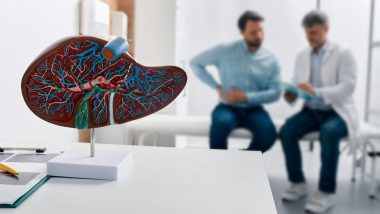In light of the recent U.S. FDA approval of terlipressin, a potent vasoconstrictor, the AGA Clinical Practice Updates Committee created this timely clinical guidance on the use of vasoactive drugs and intravenous albumin in the treatment of cirrhosis.
The full AGA Clinical Practice Update on the Use of Vasoactive Drugs and Intravenous Albumin in Cirrhosis: Expert Review, can be found in the January issue of Gastroenterology.
Key takeaways
-
Vasoactive drugs should be initiated as soon as the diagnosis of variceal hemorrhage is suspected or confirmed, preferably before diagnostic and/or therapeutic endoscopy. After initial endoscopic hemostasis, vasoactive drugs should be continued for 2–5 days to prevent early re-bleeding.
-
Intravenous (IV) albumin should be administered at the time of large-volume paracentesis. IV albumin is the volume expander of choice in hospitalized patients with cirrhosis and ascites presenting with AKI. Albumin should NOT be used in patients with cirrhosis and uncomplicated ascites.
-
Vasoactive drugs (ie., terlipressin, norepinephrine and combination of octreotide and midodrine) should be used in the treatment of hepatorenal syndrome, but not in other forms of acute kidney injury in cirrhosis.
Cirrhosis is a major cause of morbidity and mortality in the United States. As the disease progresses there is a worsening of portal hypertension and circulation leading to a progressive decrease in arterial blood volume and kidney function.
There are three common scenarios that affect patients with cirrhosis: variceal hemorrhage, ascites and spontaneous bacterial peritonitis and acute kidney injury and hepatorenal syndrome.
- Vasoactive drugs should be initiated as soon as the diagnosis of variceal hemorrhage is suspected or confirmed, preferably before diagnostic and/or therapeutic endoscopy.
- After initial endoscopic hemostasis, vasoactive drugs should be continued for 2–5 days to prevent early rebleeding.
- Octreotide is the vasoactive drug of choice in the management of variceal hemorrhage based on its safety profile.
- IV albumin may be considered in patients with spontaneous bacterial peritonitis.
- Albumin should not be used in patients (hospitalized or not) with cirrhosis and uncomplicated ascites.
- Vasoconstrictors should not be used in the management of uncomplicated ascites, after large-volume paracentesis or in patients with spontaneous bacterial peritonitis.
- IV albumin is the volume expander of choice in hospitalized patients with cirrhosis and ascites presenting with AKI.
- Vasoactive drugs (eg, terlipressin, norepinephrine, and combination of octreotide and midodrine) should be used in the treatment of HRS-AKI, but not in other forms of AKI in cirrhosis.
- Terlipressin is the vasoactive drug of choice in the treatment of HRS-AKI and use of concurrent albumin can be considered when accounting for patient’s volume status.
- Terlipressin treatment does not require intensive care unit monitoring and can be administered intravenously through a peripheral line.
- Terlipressin use is contraindicated in patients with hypoxemia and in patients with ongoing coronary, peripheral, or mesenteric ischemia, and should be used with caution in patients with acute-on-chronic liver failure grade 3. The benefits may not outweigh the risks in patients with serum creatinine >5 mg/dL and in patients listed for transplantation with a Model for End-stage Liver Disease ≥35.
Author Dr. Guadalupe Garcia-Tsao provides an overview of this new clinical guidance and the best practice advice statements clinicians should be taking into their practice.
See the full 12 best practice advice statements on our clinical guidance page.













